Guild Wars 2 Review
A title that breaks conventions and streamlines your experience to maximize the fun. But it is still an MMO.
The anticipation levels of Guild Wars 2 have been peaking for a while now. The original instance-based MMO was a hit for ArenaNet that saw the release of multiple expansions and continued development over the years, but the sequel is a new era. An era that, throughout its very lengthy development time and high-velocity marketing campaign as of late, promised to appeal to both those who love and hate MMOs. Guild Wars 2 aimed to achieve this by defying the traditional genre boundaries and gameplay expectations, and instead attempting to create something new. In the end, the game succeeds in doing so, but its appeal is still not as broad as the developers would have you believe.
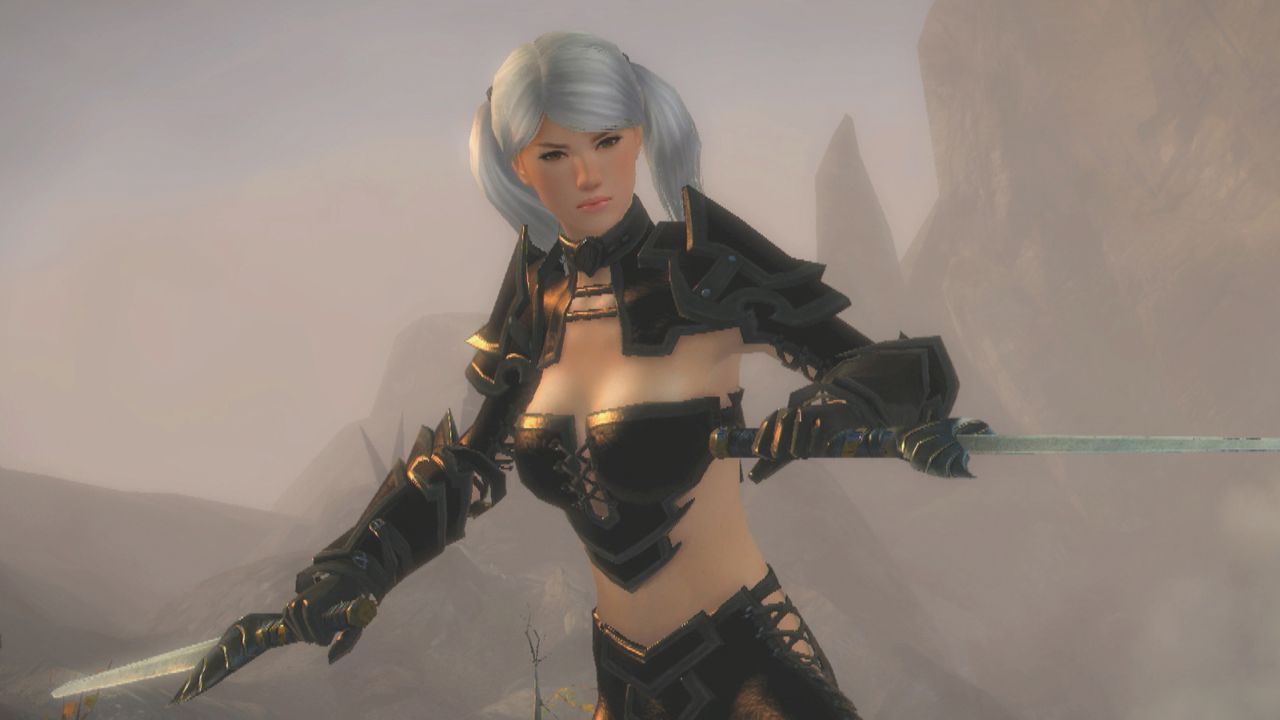
So for those who don’t know, Guild Wars was an MMO hybrid of sorts, as it was called an RPG with multiplayer lobbies by some players. That is because all of the explorable areas of the game were instanced, to be entered only by you and your player party. This is of course unlike the MMO standard, where everyone participates in the persistent online world. None the less, the game found much success with that design, and was able to tell great stories while still offering that online multiplayer feeling.
Guild Wars 2, meanwhile, is a full-on MMO with a large, persistent world to explore. Unlike the original that only offered Humans, players in the sequel can select from up to five races: Asura, Charr, Human, Norn, or Sylvari. Each race has a distinct visual design, with a variety of facial and body features to adjust – but the character creator does leave a bit to be desired. The professions offered include: Guardian, Warrior, Engineer, Ranger, Thief, Elementalist, Necromancer, and Mesmer. The best part, however, is that the game allows you total freedom of selection, not limiting players to a particular profession based on their race or vice versa.
Each race features their own starting area and what the game calls a personal storyline. These instanced quests work similar to original Guild Wars, allowing you and party members to enter the area and complete story-based scenarios. These stories do their best to personalize the experience, offering you a number of choices and missions to tackle based on personal preference. Oddly, these missions vary wildly in difficulty from one to the next, as well as between professions. You can go from single-handedly handling things to really needing a group. We also ran into quest-ending AI bugs a few times, which shouldn’t be happening for an instanced scenario.
One of the core draws of Guild Wars 2’s design is that there was a goal to eliminate the classic MMO character utilization, which breaks down into tank, healer, and DPS roles. And to the developers’ credit, they have succeeded. The so-called damage, control, and support skill breakdowns are instead the keys to success. Each class feels fully self-sufficient, having their own attack, support, and healing skills. It makes everyone more independent, but it’s not without some drawbacks.
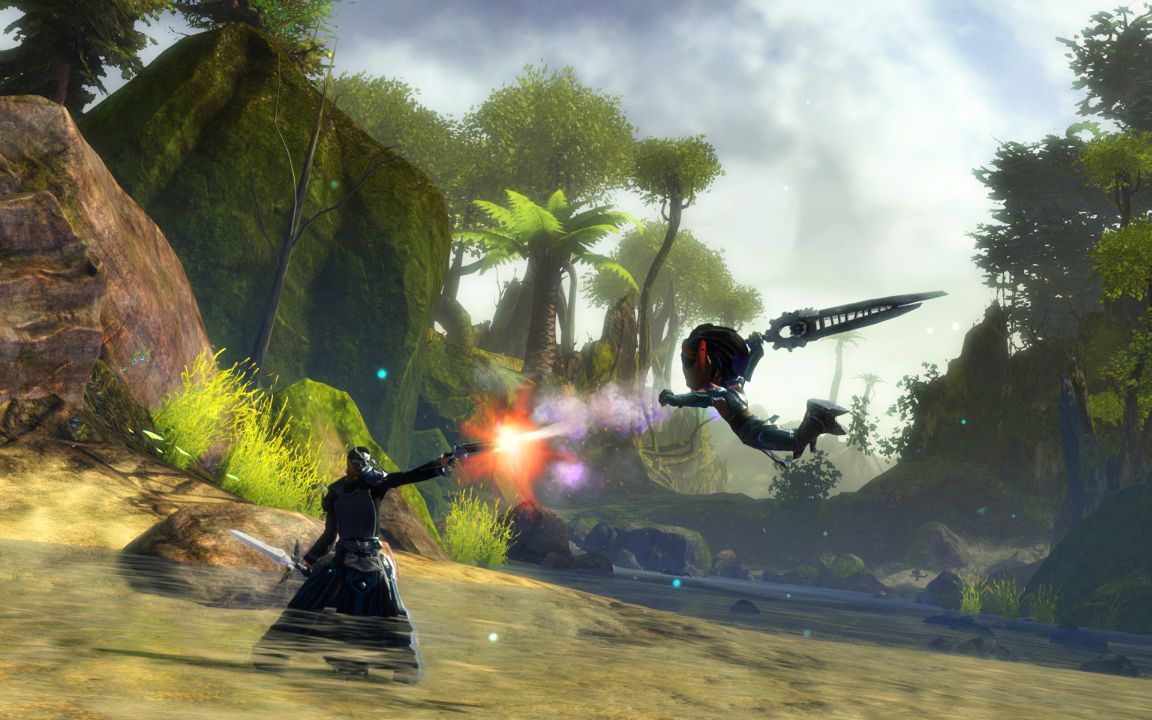
Due to this design philosophy, the skill bar in GW2 is established in a unique way – entirely dependent on what weapon you are wielding. Hold a staff, and your first five attack slots will focus on AoE and support. Swap to a dagger and maybe scepter/focus combo, and the skills switch entirely, presenting new gameplay opportunities. All classes rely on weapon swapping to succeed depending on the situation at hand. The rest of the skills are called utility, and feature a more classic unlock system and ability to be interchanged. While this presents an enormous amount of potential gameplay variety, in reality the system isn’t very flexible.
Because half of your skills are deadlocked depending on the weapon, it won’t be long before you find the best weapon and skill utilization that work for your class. From there on, especially in PvE, there’s little reason to change things. Which means you’ll potentially be using the same few skills for your whole trip through the game and beyond. While yes, that’s what essentially happens in most games anyway as users find the meta builds that work best, having the flexibility to swap or at least re-arrange your weapon skills would have been welcome. It’s certainly a drastic change from the original game’s hundreds of abilities.
Utility skills that take up the second half of your skill bar do offer a bit of that flexibility. Once unlocked, you are free to place them anywhere you’d like for use in active combat. Unlike most games, earning skill points to unlock these abilities doesn’t come with leveling up – instead, players must travel to designated locations in the game world and interact with a power source that’s usually guarded by a particularly challenging boss. It’s an intriguing twist on the classic RPG model that promotes exploration and feels rewarding.
Once your skills are arranged, it’s time to look for a fight. Many of the game’s baddies are located as you would expect from a standard MMO – mostly single, stationary enemies that respawn every few minutes. Entering the agro range (which lacks any visual cues) puts you into battle, where quick skill utilization and dodging are key factors. The game’s characters can perform up to two dodges at a time (potentially more with a specific dodge skill), at which time you need a moment to regain stamina. The game also features many underwater areas, so all lakes can be explored and often involve many new enemies and quests. Your ability bar and weapon changes automatically when under water, and there thankfully no need to worry about air. Combat controls great, even though you’re now fighting with three dimensions to consider.
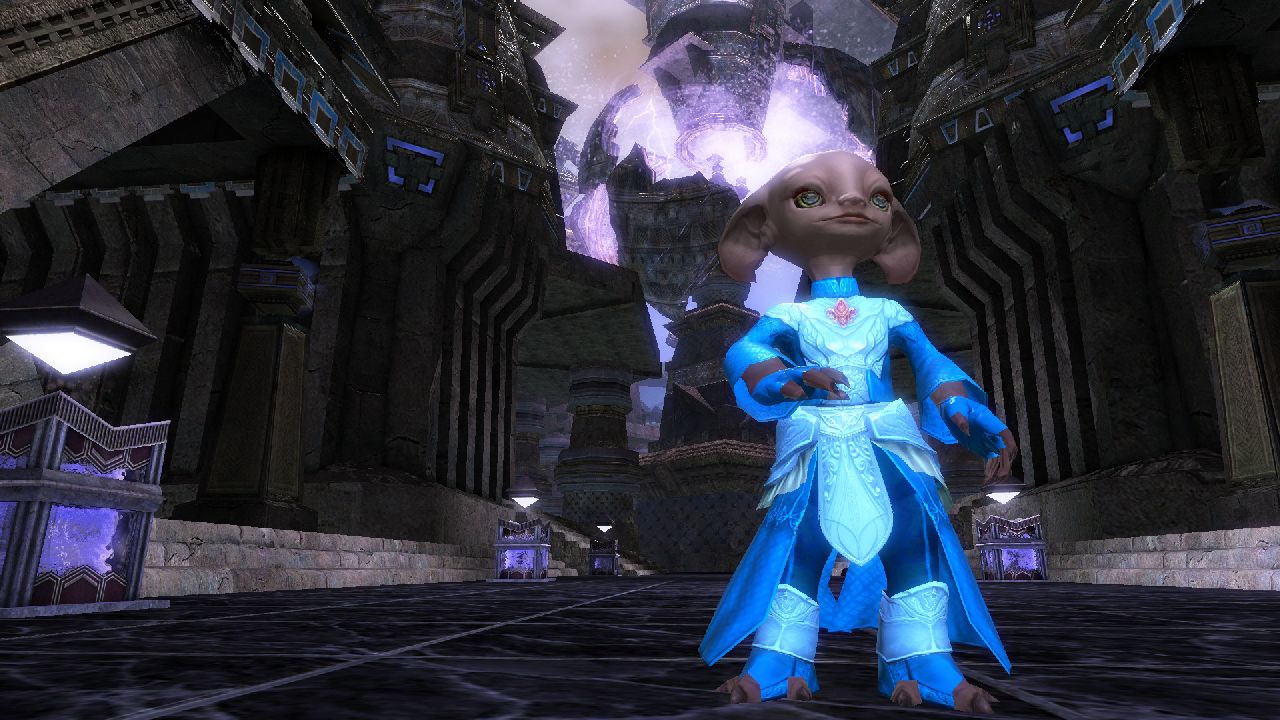
That’s the essential focus of the combat – using skills and swapping weapons, while always moving and dodging only at the right times. Even though there aren’t many skills, most present numerous opportunities for effective use, and often have more than one result associated with them. A special combo system exists in the game, whereas some skills are combo starters (such as creating a wall of fire), while others are finishers (any projectiles that go through this area will catch fire and deal extra damage to the enemy). It makes positioning and teamwork even more important. Should you not survive an encounter, you are first placed in a “downed state” where you can fight back to life if you defeat an enemy using one or two basic skills available to you.
Fighting random mobs is all well and good, but it is a grind. So for actual experience and some teamwork, Guild Wars 2 offers Dynamic Events. These events occur at seemingly random times throughout the area, and an indicator on your map points you in the right direction. Most of these events therefor attract players from the area, where your task is usually to defend an objective or kill all incoming enemies. Dynamic Events often link in chains, so as you’re done one thing, another task immediately appears – for example, you have to escort the supplies you just defended to a different location. It’s an innovative system that gives players a fun activity to do with a group of strangers. Some events are classified as group or even world, meaning that there is a bigger boss and better loot waiting for players who participate.
Dynamic events are also supposed to scale depending number of players participating – but the system’s inner workings are unclear. Sometimes, we’d only run through an event without stopping, and still get rewarded. Other times, we’d single-handedly bring down the boss to half health before other players arrived, and yet would only be rewarded with a Silver medal. There also seems to be little correlation between a huge group of players spamming the boss with attacks, and just a handful of stragglers attempting to do the same event – as the difficulty of the fight doesn’t scale. The players that arrive in single numbers are at a clear disadvantage, as the boss still has almost as much health and hits as hard as if there was a lot more of us around.
Like Dynamic Events, the quest system is fairly non-existent as well, at least in the name. Instead, notifications appear as you enter a quest area, asking you to complete a wide range of tasks (in any order and quantity) in order to help a local NPC. It shaves the time often wasted running to a person with an exclamation point above their head, getting the quest, and then returning upon completion. The process is streamlined now, saving you time and getting things done sooner. Don’t be fooled though, these are still the same “fetch” and “kill certain number of enemies” objectives, but by skipping the NPC interaction and allowing you to complete any or all tasks, the often-familiar grind is almost completely masked.
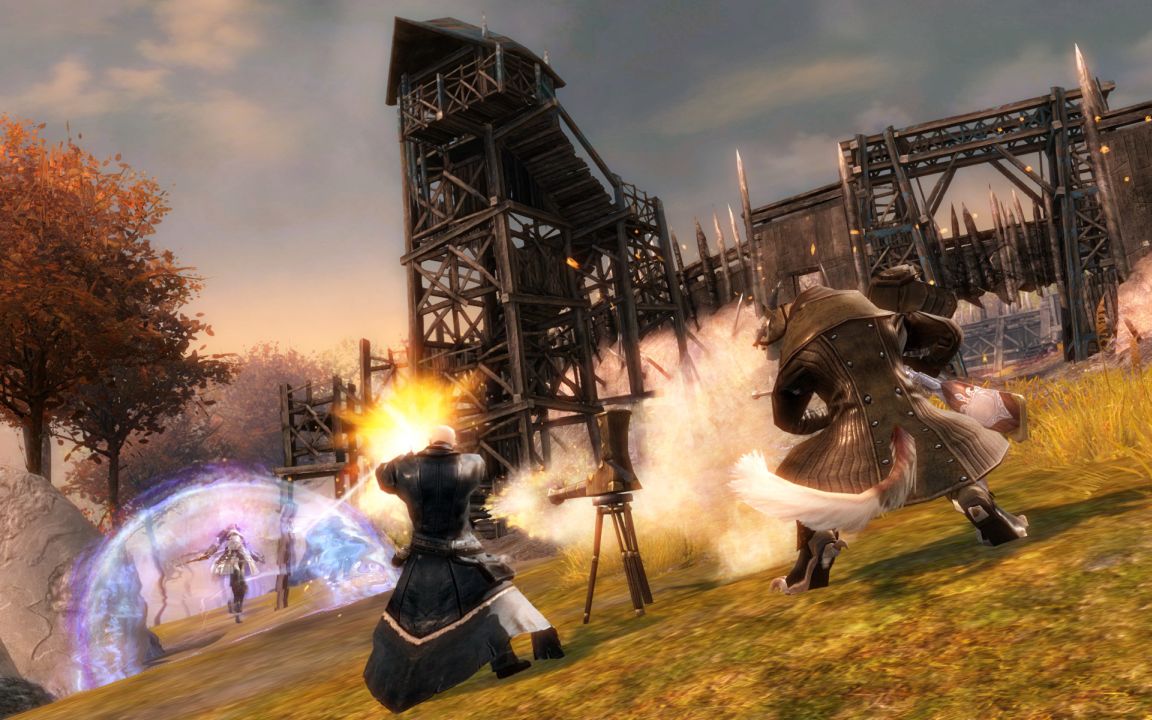
The only criticism for the Events system at the moment is that things are a bit too chaotic. Even in the mid-level areas as more players arrive, most Dynamic Events are overly crowded and pose little to no challenge – and therefor no strategy required on your part. Things get tougher later on, but as long as there are a ton of people around, events are fairly easy to complete, even if you’re below the recommended level. There is also no way to indicate if you’ve completed this event before, so be prepared to either repeat your adventures or walk away from a fight in search of something fresh. The events are also supposed to change the world, such as losing outposts and having to retake them – but we have not once seen a battle lost by players, let alone losing control of a waypoint or a city. Whether that’s due to sheer player numbers or lack of balance, remains to be seen.
Speaking of which, there is a general concern with the leveling process. Unlike many MMOs, Guild Wars 2’s approach is to let players level on the same pace, be it at level 10 or the maximum 80. It’s a welcome change and helps you constantly see steady progress of your character. However, and this happened on more than one occasion, it seems some grind is still required in order to catch up. With two of our characters, we completed the starting areas and home city to 100%, which includes all Dynamic Events at least once, found all locations and vistas, finished all quests, etc.
And yet, the next personal story quest was still a level or two above us, and so was the next explorable area. The game is great at giving you XP rewards for almost every little thing you do, but we still had to venture out to the starting areas of other races in order to get some more. It seems some balancing is yet required because the content in the level-appropriate zones runs out far too quickly – there’s simply not enough to do (without repetition or visiting lower level areas again) to gain the 10 or 15 levels that a single zone is tailored for.
What’s unique about the game, however, is that if a player has surpassed the suggested level of a zone, the game will automatically scale down your level in order to match the allowed maximum. This means that playing with your friends in low-level areas is still a decent challenge, because your abilities and stats have been downgraded to match, but it’s still satisfying because are quite powerful. The same kind of level shifting mechanic also applies to the game’s other main draw – PvP.
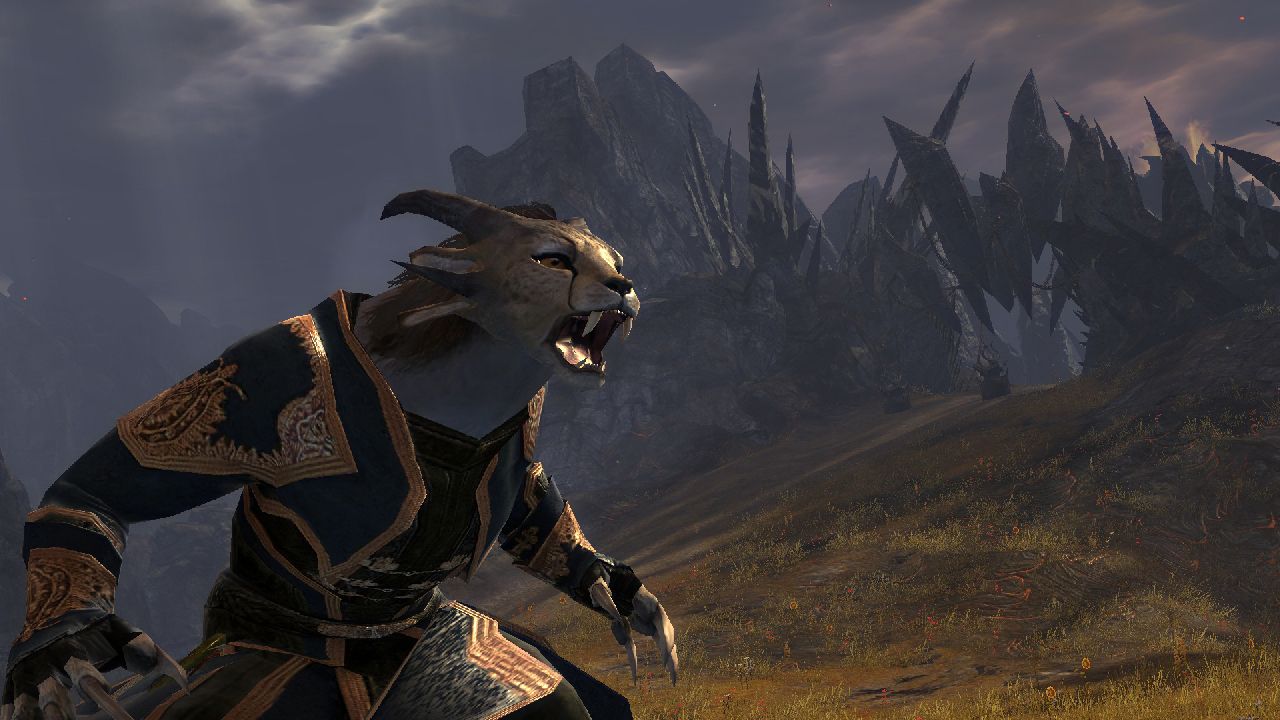
Now, in most MMOs, players often avoid PvP unless there are level restrictions that they feel can be matched by their current character skill and gear. Original Guild Wars had PvP arenas broken down by level, so the playing field was fairly level. The sequel takes things a step further, and boosts all players who participate in PvP to level 80. Your character is also given all skills and items without the need to unlock them or craft/locate in PvE. This means an ultimate competitive battleground, for players of any level in PvE and regardless of story progression. Structured PvP is the standard competitive mode, where players or teams are pitted against each other in a series of tournaments, or as a hot-join, in conquest objective maps. By participating, players earn glory and rank which are used to obtain better looking gear for use only in structured PvP. Unlike many MMOs, the sPvP is not tied to your particular server, and can be joined by anyone who owns Guild Wars 2.
A unique offering in Guild Wars 2 is a PvP mode called World versus World. Here, three different servers battle in the open-world Mists maps, with up to several hundreds of players per map. Due to the open design of the maps, there is a ton of things to do - players can besiege structures such as Keeps and Towers with siege weapons, battle over resources, and win rewards for their world. Every 5 minutes, the objectives controlled by each world are totaled and added to that world's cumulative score. A bonus called Power of the Mists is awarded to players in PvE and WvW based on the war score of their home world. It includes bonuses to health, gathering and crafting.
There are multiple teleportation points that save on the travel time, which can be extensive. Any ongoing battles are dynamically indicated on the map, which usually see two walls of players relentlessly bashing at each other. The dynamics of the mode are complex and will take some time to learn and master, so for now most can be very spammy, just like the Dynamic Events. Due to the level boosting up to 80, WvW is also available to all characters as soon as they want to participate.
Potentially the main draw of the mode is its scope, as well as PvE-like features. Each map has exploration bonuses, events, and skill point challenges like in the PvE. Unlike sPvP however, skills, traits, experience and equipment can be obtained within WvW that applies to your character permanently, so you can progress in the same manner as if playing in PvE.
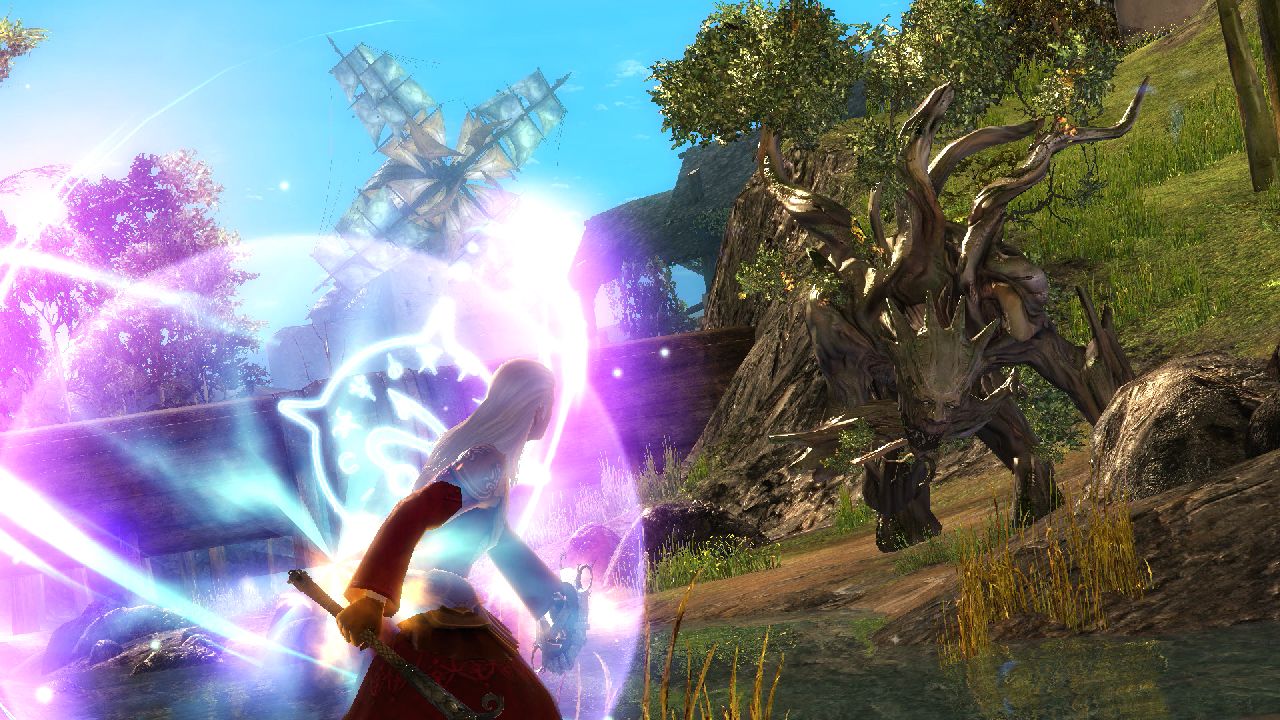
So once it’s all said and done, what is there to do at level 80? Well, we didn’t quite have enough time to speed our characters to max level, but a few of our friends have powered through to the final areas of the game and showed us around. The late game areas are mostly void of quests, instead offering various Dynamic Events. The high-end play is all about completing the game’s few dungeons (that offer multiple paths for diversity) in explorable mode, and racking up loot for the best gear in the game. Unlike the original GW, there are slight stat differences between the absolute top gear and the next lower tier of level 80 gear. So those obsessing over numbers will have more reasons to grind than just visual updates. And of course, thanks to dynamic leveling, you can go back to starting areas and still feel like you’re having fun and not just one-shot killing everything.
The guild system has been expanded and improved, as players can now belong to multiple guilds at the same time. The catch is that you can only represent one guild at a time, and everything you complete in the game earns your guild points, which are then used to purchase upgrades and useful services. Guild Halls don’t exist anymore (though may appear later), but it’s nice to see the system isn’t driven by simple money donations. Players can also designate a number of different ranks for guild members, each with nicely laid out access levels.
After making it this far, you’ve probably come to realize that Guild Wars 2 is still an MMO at heart. From crafting to material gathering, leveling up and finding the best gear, it’s all very familiar to a seasoned player. But there are changes that MMO players will love – instanced nodes (so there is no competition to gather anything), reserved loot drops, a balanced PvP system to ensure fairness, lack of quest NPCs, and also an Overflow system. Unlike server queues, if your world is full you can still play the game in a virtual copy of your server, of sorts. Everything you do counts, and when the real server is ready, you can instantly switch. There are some disadvantages for playing in Overflow - such as glitches, grouping issues, and lower number of players. Experienced players should also take note that GW 2, as a whole, is about just having fun and not worrying about getting crazy gear or a super powerful character. This may rub some elite players the wrong way, but that’s the mentality behind the design.
And let’s consider those who don’t enjoy MMOs and perhaps liked GW for what it was. Well, unlike the developers would want you to believe, Guild Wars 2 is still an MMO. It’s a subscription-free, really well made and genre-defining experience – but still an MMO with all its gameplay caveats and expectations. There are many systems in place to make you feel as welcome and on-par with the elite players as possible, but if everything you’ve read so far doesn’t change your mind about MMOs in general, you may need to pass. The objectives for Hearts begin to repeat themselves fairly quickly and boil down to the same types of tasks you’d perform in any other MMO – kill enemies, gather items, or play minigames. A very brief and inadequate text-only tutorial for most concepts in the game, from PvE to WvW, presents a rather steep learning curve for new players, and even those who tried MMOs in the past.
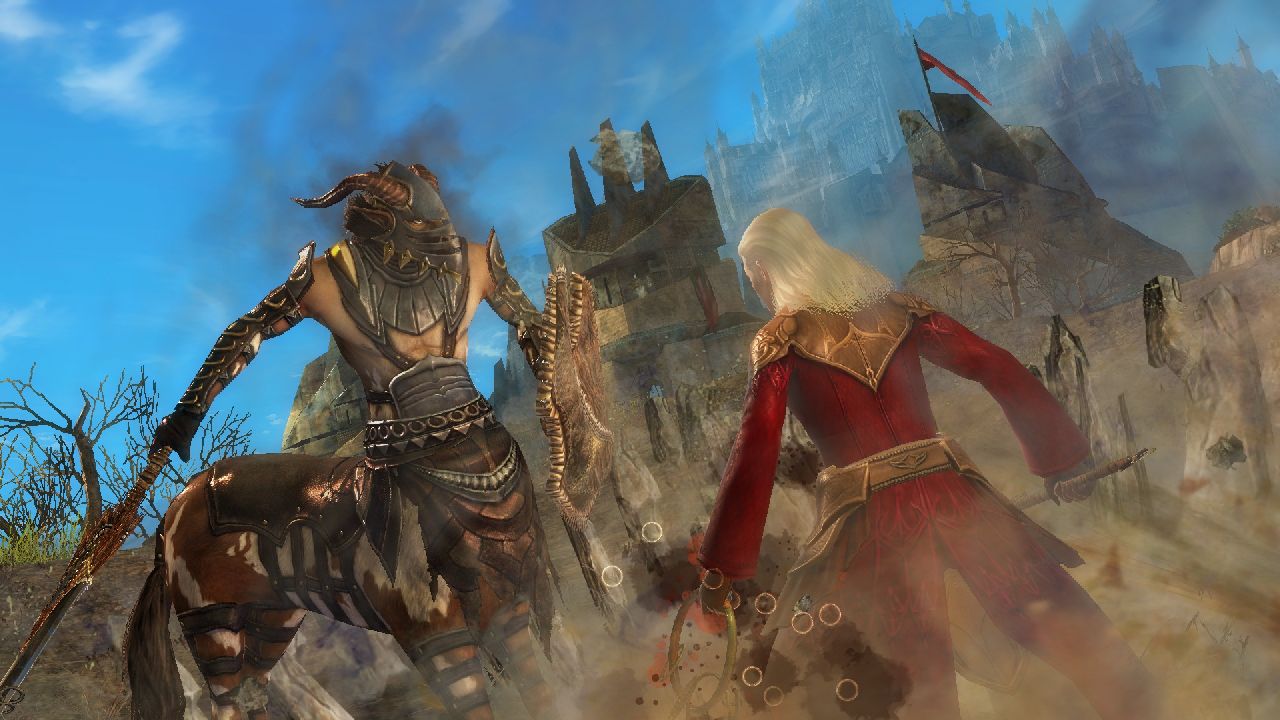
Also, due to no monthly fees, a Gem system is in place for ArenaNet to make some money. Consequently, some corners have been cut to promote money spending. Inventory, while easily managed, is fairly small and so is your storage account. Things like more inventory, new character slots, extra XP boosts and keys to unlock chests you sometimes find are all purchasable by Gems, which are acquired by real cash or via trading in your character’s gold. It’s not pay to win - as the gems you buy are mostly spent on cosmetic items. But with the ability to trade your gems for gold, and the conversion rate being incredibly high right now, cash is the only sensible option if you want to get more out of the game.
Aside from the issues mentioned throughout this review so far, other annoyances often creep up. The fast travel system costs money, but the cost goes up with your character’s level instead of distance traveled. The Trading Post has only recently come online for the first time since launch and not without bugs. It charges players taxes for both listing and selling an item, thus depleting your precious gold reserves further, and there aren’t even visual previews for items you might be interested in. No direct player trading is allowed, except via a mail system, which opens the door for scams. Many Dynamic Events are glorified zerg rushes, and so is WvW, where the punishment for dying is having to run a quarter mile, join a wall of death, maybe kill a player or two, die, and run some more. When the action arrives at a structure of importance things change a bit, but not by much.
Like its predecessor, Guild Wars 2 does shine in presentation and technical aspects. This is a very good looking MMO, with lush detail and some incredible vistas to view. Each of the races are designed with attention to detail, and the world around you is vivid with color and atmosphere utilizing an artistic style. The underwater sections look great as well. Audio design is equally engrossing, and fans may recognize quite a few tunes here from the original game. Whether that’s for nostalgic purposes or cost saving, but the game could have used a few more voice actors as well for player characters. Running on a mid-tier rig, the game had no technical problems during our lengthy sessions, and in fact looks good even on lower settings thanks to good scaling and extensive graphical options.
The toughest question of all, perhaps, is does Guild Wars 2 live up to its promise of revolutionizing the genre? The answer is a thoughtful negative. It’s probably the most user-friendly and streamlined MMO that has ever graced your PC in the past few years. But it’s still filled with shortcuts and alternative methods of having players do the same thing they’ve always been doing. Call it what you want, but you are completing quests when doing Hearts. Dynamic Events are a potentially repetitive escort or defend missions, simply chained together. Adjustable leveling is a welcome change for both returning to PvE content and playing in Competitive modes. Putting everyone on the same page presents a fair challenge even to the newcomers, which again reflects the accessibility of the game.
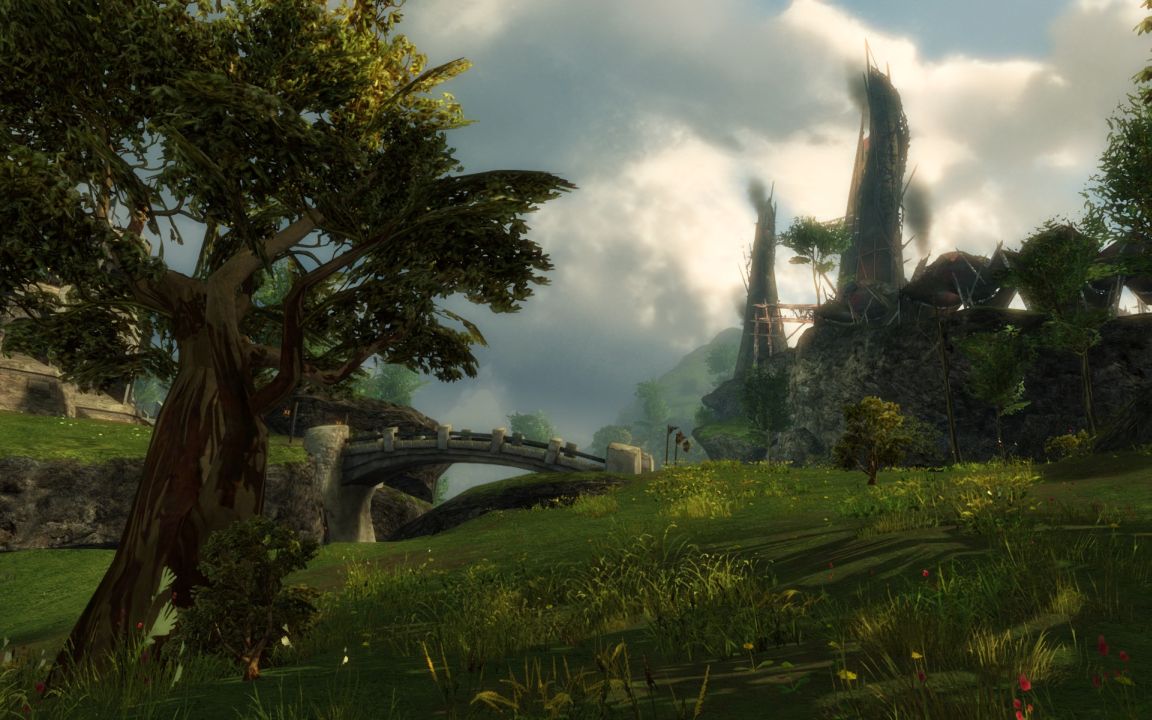
Those who already play MMOs will love Guild Wars 2 and should try it as soon as possible. If you aren’t an MMO player, this may be your gateway drug. Perhaps the best case that Guild Wars 2 makes is that it’s a fun game with some neat ideas to streamline the usual chore of MMOs, a game that you can pick up and play whenever you want, without fear of out-leveling your friends or worrying about monthly fees. An evolution of the genre.
 Comments
Comments


















